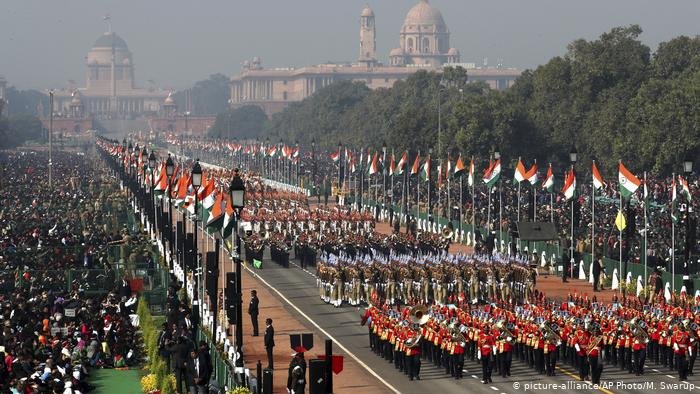|
Listen to article
Getting your Trinity Audio player ready...
|

The Republic Day every year serves as a reminder to the present generation of the toils of our previous generations. What we take for granted today was beyond imagination for our forefathers not long ago but just merely seven decades ago. Decades in the life of nations are not as substantial as centuries that are more impactful. However, the constitutional architecture that has enabled democratic institutions has played a significant role in shaping the national consciousness in the course of history of independent India. This has come at a huge cost and therefore must be given due respect. The fact that you can write or express your thoughts and feelings freely in any manner has also come through struggles unimaginable. The fact that multiple farmers organizations will be staging a parallel parade along with the Republic Day parade is also possible only in our country. Democracy is ingrained in the thinking of an average Indian citizen as is also visible in the everyday interactions at our homes and work places.
Plato around 375 BC imagined a republic as the order and character of the just city state. Justice must be the cornerstone of any republic. But the order and character of any state is premised on the role of institutions and the citizens and the obvious inter relationship between them. Law for the uninitiated is nothing but a set of generally accepted rules and regulations governing interrelations in society, seeking to create order and balanced development of all. Law is central to the idea and imagination of a republic. Since the age of renaissance in the 16th Century AD and the arrival of printing press, there has been a constant conflict for the maintenance of state power. The United States of America may claim to be the oldest democracy in the world today but is it also one of the most successful, sustainable and participatory templates of governance.? Questions are being raised after what happened throughout last year and on Capitol hill recently. Therefore the health of the democracy is based on the nature of its citizenry.
Institutions that matter
The makers of our Constitution were men and women of great vision and foresight. The institutional architecture was designed in a manner so as to create a balance and keep a check that is known as separation of powers in constitutional parlance. Like individuals, institutions also have tendencies to go extreme and thus require constant mechanisms that ensures an equilibrium. Parliament assisted by the executive is checked by the judiciary. Now, the role of the judiciary in governance is a hotly contested subject. Sufficient literature has come out as a product of this engagement through judgments and academic works. One of the recent examples of this was being discussed when the Supreme Court asked the government to put a stay on the three farm laws that advocate for more autonomy for our farmers in terms of freedom of trade. On previous occasions as well, the judiciary and the executive have been at loggerheads on a number of issues related to polity and governance. However, no accusatory fingers have been pointed to impute the integrity of any institution and the relationship between them. This is precisely the beauty of our democratic credentials that is celebrated on the Republic Day. It is much beyond the chivalrous display of culture, diversity and Armory.
Participation and Representation
Another outstanding feature of our republic is the process of decision making that is consultative, collaborative and participatory in the truest sense. “On the 26th of January 1950, we are going to enter into a life of contradictions. In politics we will have equality and in social and economic life we will have inequality. In politics we will be recognizing the principle of one man one vote and one vote one value. In our social and economic life, we shall, by reason of our social and economic structure, continue to deny the principle of one man one value.”, said the Chairperson of the Drafting Committee of the Constitution of India on the Day we became a Republic.
There is still a long journey until we achieve the vision and objectives of our founding fathers like Dr. B.R. Ambedkar. Representation not ceremonial and symbolic but meaningful and consequential is the aspiration of the social groups which have been at the margins since a long period of time. The structures of power have doubtlessly undergone decentralization in the social pyramid. Key sectors like education, bureaucracy and media are still lacking inclusiveness and are not reflective of the social realities.
The credibility of our institutions and our incessant urge to become an inclusive society are distinct and remarkable features unique to our nation. . On this Republic Day, let us not just restrict ourselves to the ceremonial celebrations but let us slow down in our daily lives and indulge in some collective introspection on what we have achieved and how we want our future generations to cherish the idea of republic.






Full of hope and extremely encouraging article. Guru Prakash ji you are best.
The journey of “Republic ” from. great Plato to modern Scholar Dr Ambedkar brought out by you is exceptionally good.
Many more of us do not know the correct spirit of Republic.
Keep on going to enlighten all of us.
Well defined and Researched